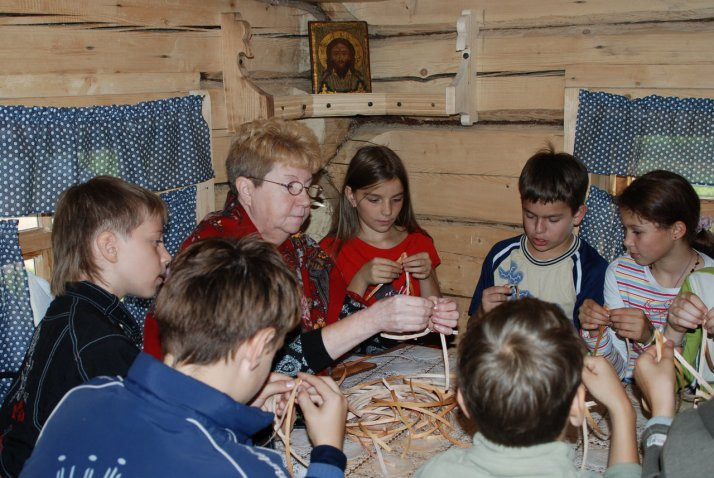BIRCH-BARK WICKERWORK
Carrying out time:
Round the year
Making bast shoes (lapti), baskets, tussocks, birch-bark ware demanded special skills and mastery. Birch bark was harvested in the early spring in order to avoid hurting birch trunks. Then it would be cut into long stripes, flaked, oiled, and bound; only after that craftsmen would begin their work. Most often, birch-bark wickerwork was a male craft, because it required certain arm strength. Birch-bark goods were durable and waterproof. They were used for keeping salt and milk; the latter would not turn sour as birch bark is a good antiseptic.
Masters of folk crafts:
Izolda Galayeva - teacher of the highest category, master of national crafts of the Vologda region
Galina Lukinskaya - teacher of the highest category
Svetlana Mikhaylova - master of national crafts of the Vologda region
Cost for any workshop is 150 rubles per person. No less than five people are needed for a workshop. (Smaller groups are charged at the rate of five people.)




